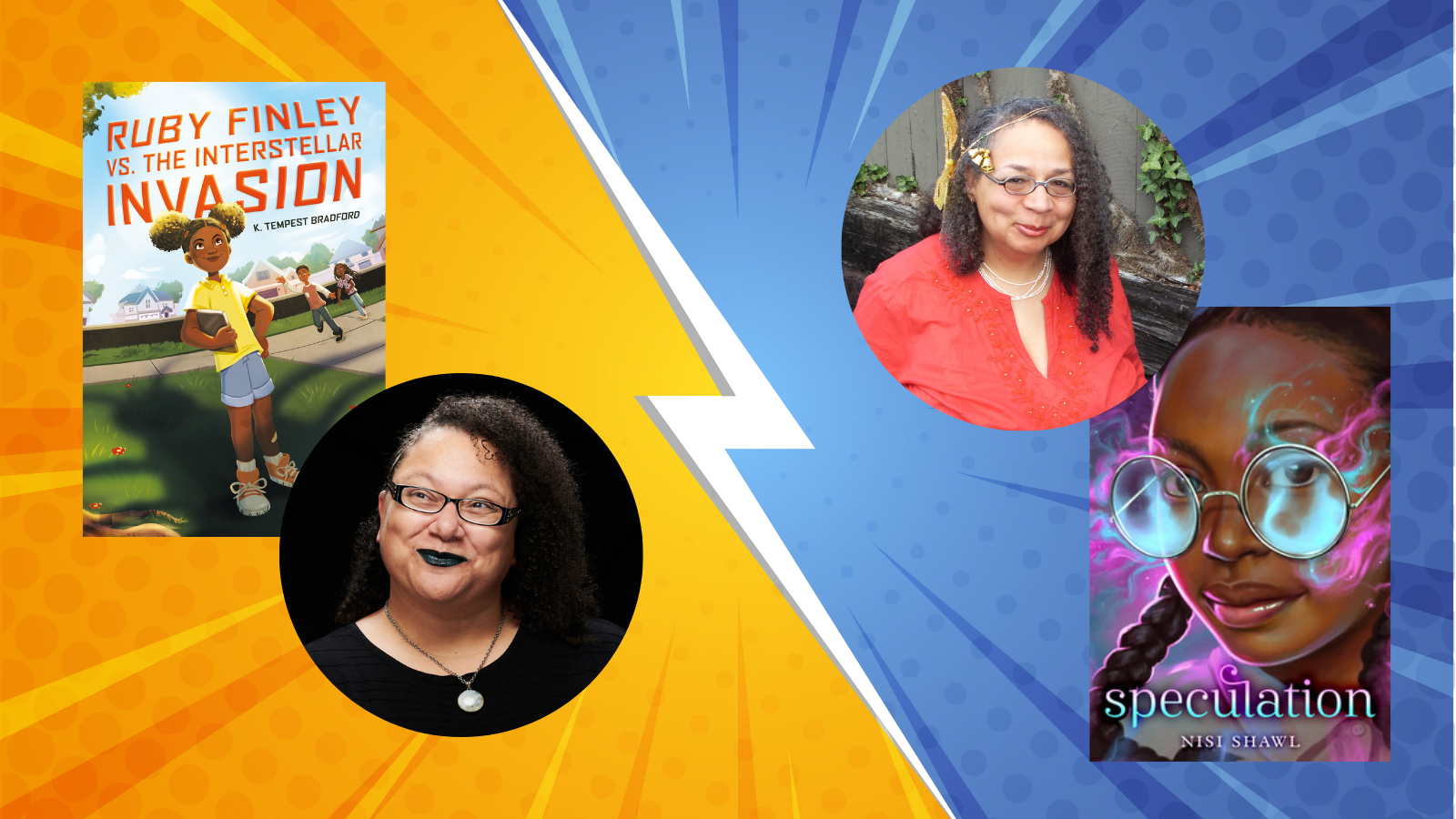BACK TO THE FUTURE OF THE PAST
A year before the Broadway premiere of the Lorraine Hansberry play discussed here in previously, Les Blancs, British press Allison & Busby published Sam Greenlee’s novel The Spook Who Sat by the Door. Eventually Bantam published a paperback version in the U.S., but though that went into over a dozen printings and the book was later made into a movie, Spook has remained a so-called cult classic since its initial appearance on the literary scene. The “cult” to which its popularity is limited is apparently that of black people and those who support them in their struggles.
As I explained earlier, this series is an expansion of my Fantastic Stories of the Imagination article titled “A Crash Course in the History of Black Science Fiction.” (That essay is now hosted here and on my personal website.) At Tor.com’s invitation I agreed to delve more deeply into each of the 42 titles on that list in turn. The original essay became a popular reference–apparently there wasn’t anything else like it available. The Carl Brandon Society’s website seems a good home for both the Crash Course and my subsequent expansions, so with the agreement of Tor.com I’m republishing them here on a monthly basis.
A BOOK ABOUT WHAT COULD HAVE HAPPENED
The novel’s titular spook is the CIA’s first black spy. After rigorous training designed to cause him to fail out of the hiring pool, and a five-year stint making photocopies and giving guided tours of the facilities to congressmen, Dan Freeman returns to his hometown of Chicago. Deep undercover, he recruits black gangs to wage literal, bombs-and-grenades war on the white establishment. The war spreads, by the book’s end encompassing multiple cities, and its outcome is presented as ambiguously hopeful.
Now, with the crack cocaine epidemic just starting to recede in our rearview mirror, those of us still riding into the days to come don’t see training idealistic street gangs in guerilla warfare as a viable alternative to accepting the status quo. Now, with Greenlee in his grave for three years and counting as I write this, Spook looks more like the sort of Afrodiasporic alternate history my Twitter feed proposes in place of HBO’s Confederate and other shows based on the tired old what-if-the-South-won-the-Civil-War scenario.
WHAT ABOUT WOMEN?
Now, washed over by a couple of waves of feminism, it’s easy to critique the book’s sexism. The King Cobras gang members, who know Freeman as “Turk,” the police, the National Guard, Freeman’s fellow potential-operatives-in-training, are all unrelentingly male. Some relief comes from a few bit players: a pusher’s mother, a Senator’s secretary, and his wife. There are also two more important roles for women in the novel: Joy, Freeman’s on-again, off-again girlfriend; and the nameless prostitute he refers to as “the Dahomey queen.” The sex-worker warns him when the law picks up his trail. The girlfriend betrays him. But whether women help or hinder his narrative, the novel is Freeman’s story, beginning to end. And though nonstandard sexuality is ascribed to the prostitute, existence beyond the gender binary is never even hinted at.
WHAT ABOUT THOSE MEN, THOUGH?
However, that’s not to say that the bonds of masculinity go unexamined. As in Spook’s literary contemporary, Les Blancs, the protagonist is forced to choose between his brother’s life and a life of freedom. Though Hansberry’s Tshembe must kill his biological brother and the beloved enemy Greenlee’s Freeman chokes to death is merely his closest friend, the point in both cases is that sacrifice is necessary. “Did you think we were playing games?” Freeman asks the appalled Cobras who clear away the friend’s body. “Killing people we don’t know and don’t dig?” Sympathy, shared memories, common tastes: the usual foundations of comradeship fall by the wayside or are dropped there during the struggle for liberation. Masculine camaraderie is cherished, but brothers of any sort canít be allowed to stand in one another’s way.
WHAT IF THEY’RE WHITE?
And there are all sorts of brothers. A King Cobra high-up called Pretty Willie easily passes for white during a bank robbery. This visual impression of his race is probably correct, looking at it purely percentage-wise. But like a blue-eyed, blond, blush-cheeked second-grade classmate of mine, Pretty Willie denies his whiteness vehemently–and effectively. He argues that in the eyes of white supremacists he is a nigger, and that’s just fine by him. His definition of blackness is rooted in the opposition his mode of being excites in “crackers” eyes, and this definition works well enough for him and his fellow Cobras to do what must be done: shoot soldiers, kidnap officers, steal arms, demand freedom.
HOW TO GET THERE STILL
The day Greenlee sought to seize via his novel’s call to action has passed. So Spook is no longer science fiction, and though I treasure my tight-spined mass market paperback for multiple reasons–it’s inscribed and signed by the author, it contains one of my favorite ironic lines of all time (“In all his career as a professional Negro, Summerfield had never before encountered a white liberal who actually wanted an original opinion from a Negro concerning civil rights, for they all considered themselves experts on the subject.”)–it’s much more than an artifact of an historical moment. More than just a story of what could have happened. Because it’s that, true. But also, if you look at the making and preservation of the 1973 movie of the same name, it’s an example of how to go forward from where we find ourselves now.
Ivan Dixon directed the film version of Spook using a script Greenlee co-wrote. Many scenes were shot without permits, “guerilla style,” as Greenlee recalls in one interview. When Daley’s Chicago proved uncooperative, the mayor of Gary, Indiana stepped up and volunteered his city as a setting.
The movie’s production costs–around $850,000–were raised by donations from the black community. This was pre-internet crowdfunding. Single mothers on food stamps gave to the cause. Black doctors. One well-to-do white ally, too. Filming went on concurrent with fundraising, and at times meeting payroll was a tough proposition. But with the final $150,000 needed coming from United Artists in exchange for distribution rights, it looked like the path to legendary greatness was cleared. Ticket sales in the three weeks right after Spook’s release were high and climbing.
Then the movie disappeared.
Greenlee says he received at least one firsthand report of a theater manager threatened with either violence or legal action by self-identified FBI agents–these unspecified threats to be carried out unless the manager broke his contract and canceled Spook’s run. The manager in the anecdote, like dozens of others, held firm, though no one re-booked it. Prescient pirates made low-quality recordings of the film, which kept the memory of its audacity alive underground for decades after its commercial prints mysteriously vanished.
A negative of the film stored under a false name was recovered in 2004, basis for many of the full-length YouTube videos we watch free of charge today. In 2012, The Spook Who Sat by the Door was added to the National Film Registry because of its cultural and historical significance. Because of Spook’s visionary take on how activism could have shaped the world, and its roots in passion and community involvement suggestive of how to implement new activist visions, it deserves a place in our History of Black SF, too.
#

